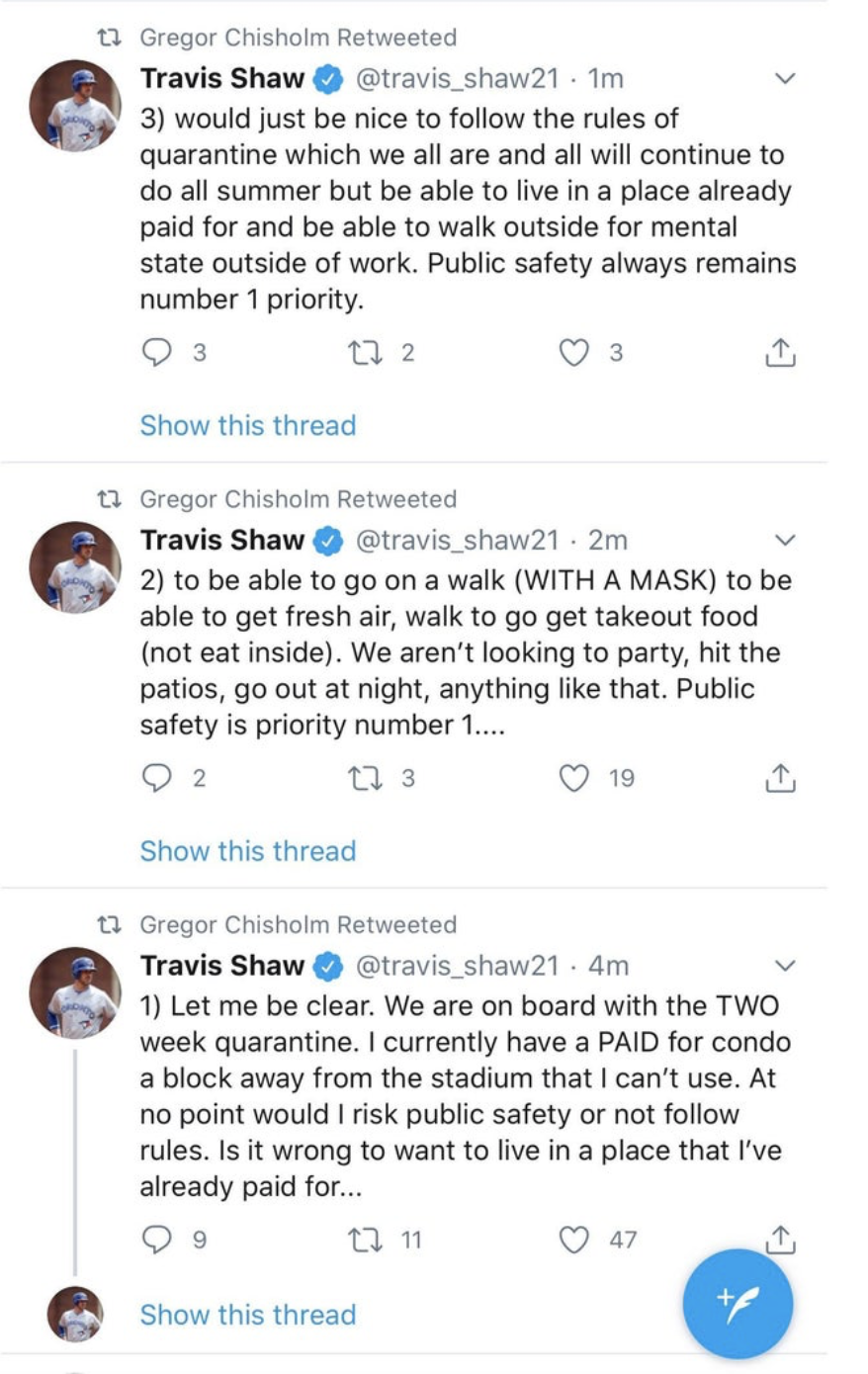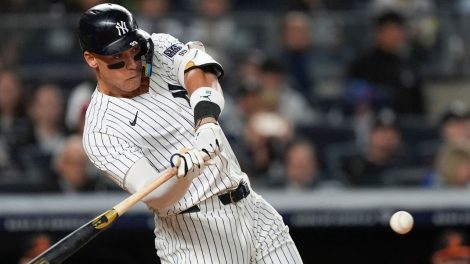TORONTO – The first round of results from the monitoring phase of Major League Baseball’s COVID-19 Health Monitoring and Testing Plan were released Friday, with 17 positives among the 7,401 samples collected.
That’s a 0.23 per cent rate for positive tests, down from the 1.8 per cent (66 of 3,748) logged during the intake phase.
On the surface, that seems like pretty good progress. But it also means that despite all of the protocols put in place by Major League Baseball, 17 players cleared at intake were subsequently infected once, in theory, they were working alongside only other healthy individuals.
Whether that’s a byproduct of community spread or contact with a teammate or staffer to have previously contracted the coronavirus is unclear. But the way that monitoring number trends is the truest measure of whether baseball’s open-bubble plan is succeeding, or not.
What the Canadian government – which continues to work on a modified quarantine plan with the Toronto Blue Jays before deciding whether to grant a second exemption to allow regular-season games at Rogers Centre – makes of those results is perhaps the most pivotal question for the only MLB club north of the border right now.
[snippet id=3305549]
The series of tweets posted Friday by Blue Jays third baseman Travis Shaw – including one saying that remaining in quarantine all summer “isn’t gonna happen. Not an option,” and others since deleted but captured via screen shot – isn’t likely to help.
Though the club remains optimistic about playing its games here, the amount of COVID-19 circulating in so many American MLB cities makes guaranteeing that infected players won’t cross the border impossible.
Given that, the question becomes how much risk is tolerable and appropriate for a relatively small and hyper-focused dose of economic activity, especially given the sacrifices made by Canadians to contain the pandemic.
In its simplest terms, that’s the calculation on the government end of things – is this safe, and is it worth it?
What Shaw’s tweets, especially the deleted ones below, highlight is the challenge on the player end of things, particularly about spending a sizeable chunk of the next two-plus months in quarantine while in Toronto, which will have to be a fundamental part of any new framework.

And his surprise at the possibility of further quarantine once in Toronto – each new arrival in Canada restarts the mandatory 14-day period of isolation – raises questions about what Blue Jays players have been led to expect if they do get to play here during the season.
“We’re fine, we’re fine,” manager Charlie Montoyo said Friday when asked if he was concerned about how his players felt about the current quarantine. “I talk to these guys every day, I communicate with them and everybody is fine. The Canadian government gave us a chance to come to Toronto to have a spring camp. Nothing else has been decided. You have no idea how grateful I am and the Toronto Blue Jays, too, for this opportunity to be here.
“It’s a lot safer, believe me. I feel that way, anyways. I know we all do.”
The priority, of course, is in keeping things that way, which makes having the regular-season games here problematic. Under MLB’s Operations Manual, each team is to come up with its own code of conduct to govern behaviour off the field, and the potential for variances there, especially with community spread rates in many U.S. locales, is halting.
Barring strict bubble measures, like the ones the NBA has put in place and the NHL is planning, there’s a lot of potential for random exposure there.
At the same time, players are understandably reluctant to be so restricted through the end of September. Training camp alone represents nearly three weeks apart from family – the initial expectation was that significant others and kids would be allowed in Toronto – and being limited to the hotel and dome for another month upon return is no doubt taxing.
Making it all the more complicated is that the other 29 teams, at least right now, won’t be facing similar hardships. One player said it was difficult explaining the separation to the significant other left behind when other families in baseball aren’t being similarly separated.
There’s a real human cost there, as Randal Grichuk highlighted in this tweet.
I wanna make it clear, we’re not asking for special treatment. We understand that we need to stay in a “quarantine bubble”. We wanna make sure everyone is safe. The toughest part is them not allowing our family to come with us. That’s what makes it tough for a lot of guys.
— Randal Grichuk (@RGrich15) July 10, 2020
At the same time, playing in Dunedin, Fla., described last week by club president and CEO Mark Shapiro as the most likely backup, isn’t particularly appealing given how difficult it will make keeping players safe.
“My opinion, and I know they all feel the same way, is we’re a lot safer here,” said Montoyo. “The Canadian government and the Canadian people have done a great job with this virus and you have no idea how safe I feel. We go from the hotel back here, the roof is open many times, everybody is fine. I thank the Canadian government for giving us a chance to have spring camp here. That’s going to help a lot, for sure, it should help us stay healthy.
“I’m glad that we’re here. And we’re going to follow all the guidelines, I promise you that.”
[snippet id=4722869]
Penalties of up to $750,000 and six months in prison for violations of the Quarantine Act pretty much ensure compliance, but is that the way to enforce the necessary discipline all season, under threat?
An oft-discussed third option is Buffalo’s Sahlen Field, which is tentatively slated to serve as the club’s Alternative Training Site. The Blue Jays are believed to have explored using it for more again this week, even though the triple-A Bisons’ home isn’t up to major-league standards, isn’t set up ideally from an infrastructure viewpoint, and would come with several additional costs.
On the plus side, though, it’s safer than Florida and would be less restrictive than Toronto.
There’s no perfect choice here for the Blue Jays, as each option has plusses and minuses and there’s no realistic chance of unanimity across the roster. The interests and motivations are different across the board. Ultimately, though, it may not matter, because if MLB’s monitoring phase numbers aren’t good enough, the Canadian government doesn’t give them the option.
[relatedlinks]








